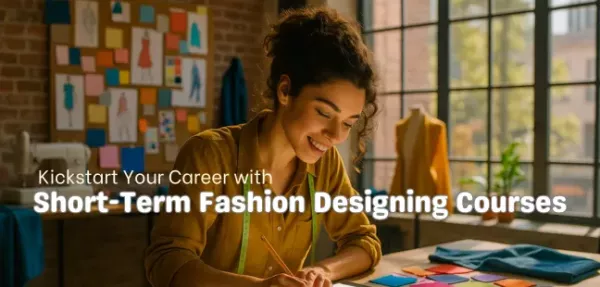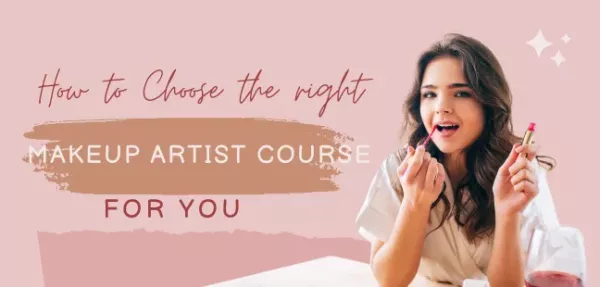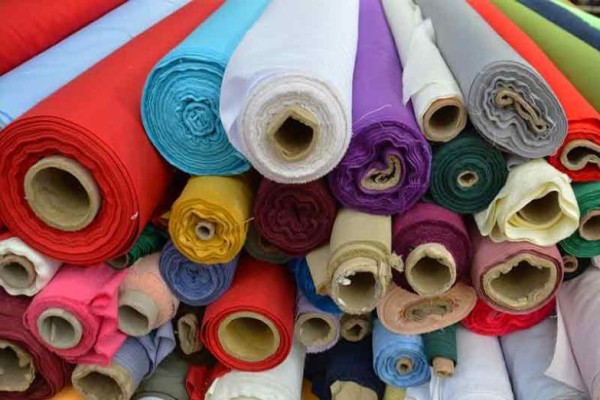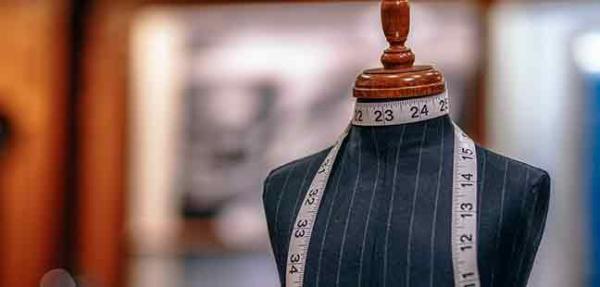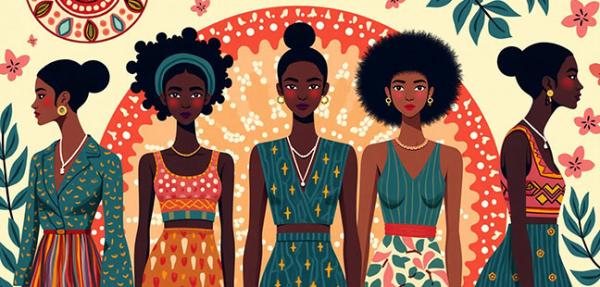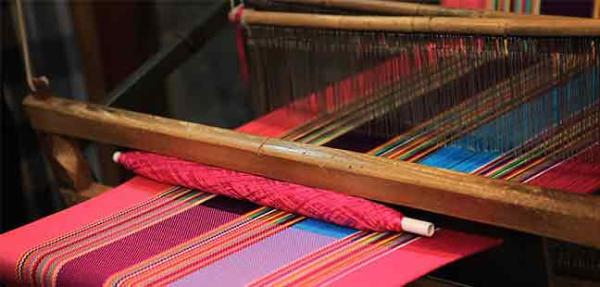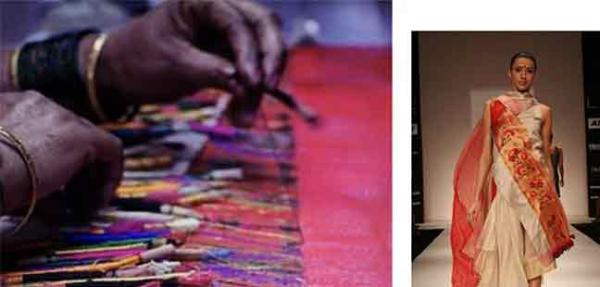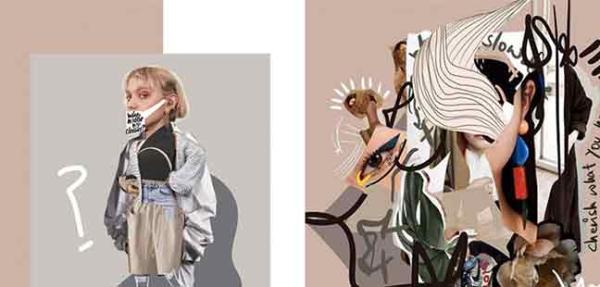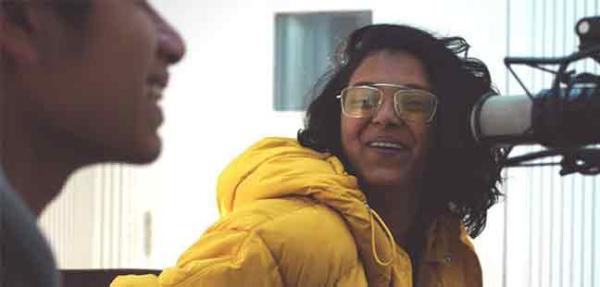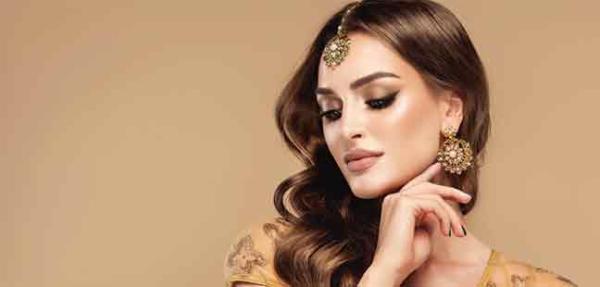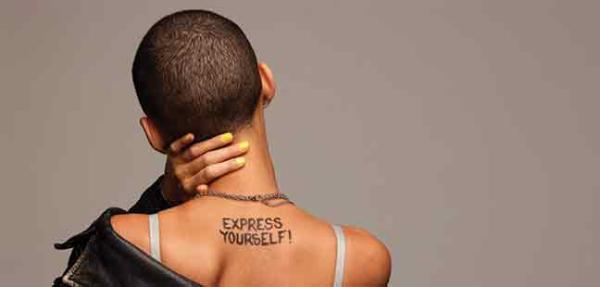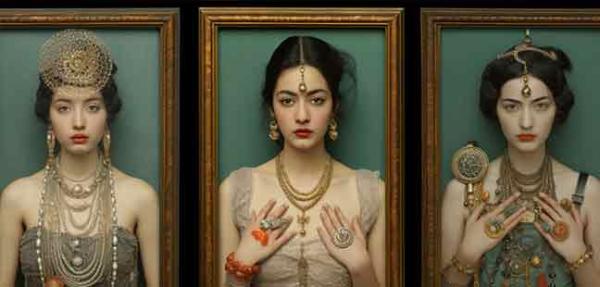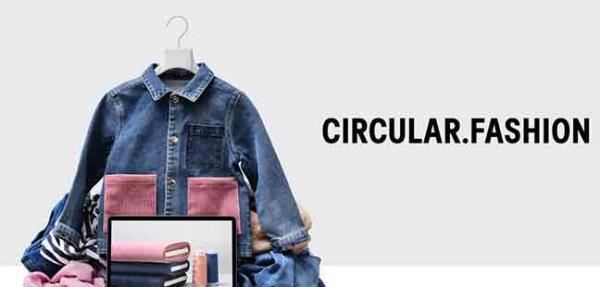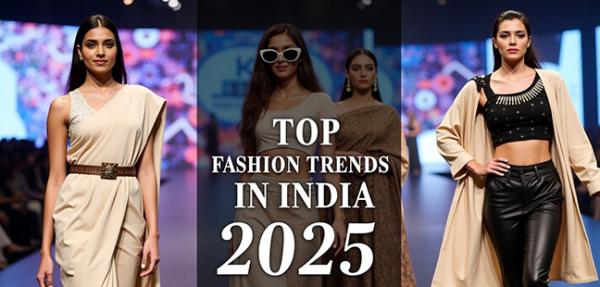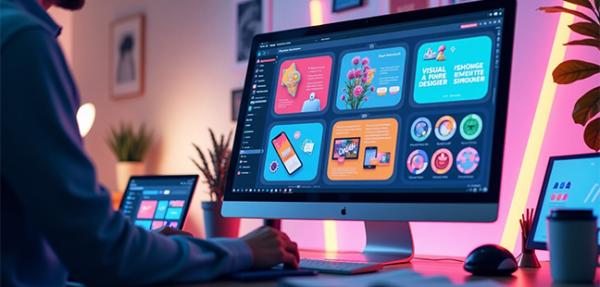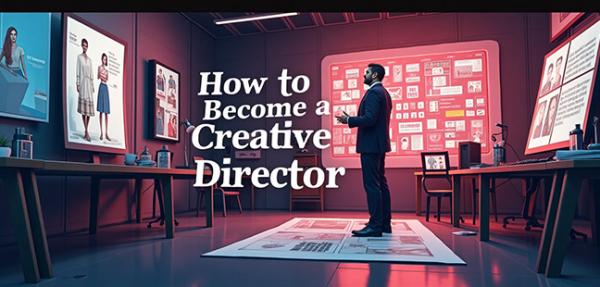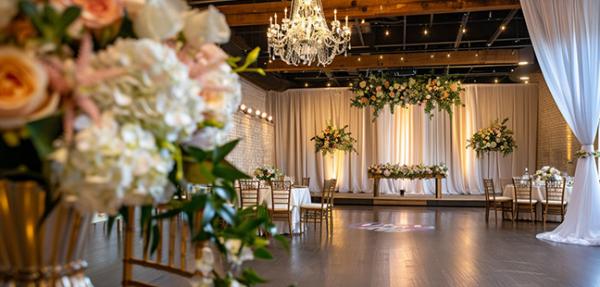Fashion Designing Courses After 12th: A Complete Guide
- Pearl Academy Editorial Team
- Published 23-Apr-2025
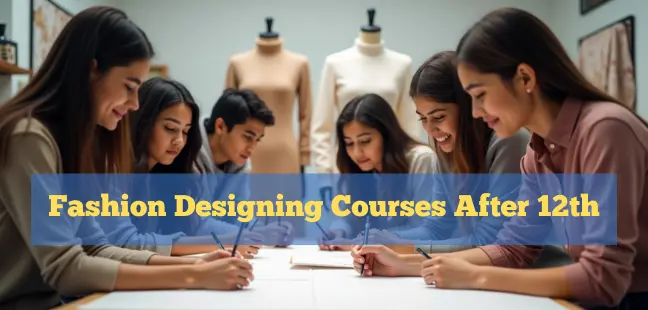
Table of Contents:
Why Choose Fashion Designing Courses After 12th?
Types of Fashion Designing Courses After 12th
Fashion Designing Courses Eligibility After 12th
Top Entrance Exams for Fashion Designing Courses
Duration and Curriculum of Fashion Designing Courses
Fashion Designing Course Fee After 12th
Scholarship and Financial Aid Options
What skills are required to succeed in Fashion Design
Career Opportunities After Fashion Designing Courses
Common Questions About Fashion Designing Courses After 12th
How to Choose the Right Fashion Designing Courses After 12th
Final Thoughts: is Fashion Designing the Right Path for You?
Explore Top Fashion Designing Colleges & Apply Today
If your heart sings a song of fashion, creativity, and trends, my friend, the fashion world is your destiny! To fulfil your destiny, choosing fashion design courses after 12th could be your first step into an exciting and rewarding industry.
Don’t be misled into believing fashion is just about sketching dainty outfits. It's about innovation, cultural expression, storytelling, and business. Suppose you are interested, irrespective of whether you come from a humanities, commerce, or science background. In that case, there’s a wide range of fashion design courses after the 12th to help you turn your passion into a profession.
Let’s dive into this complete guide covering everything from course types to fees, duration, and career scope.
Become future-ready with our Fashion Programs
Know MoreWhy Choose Fashion Designing After 12th?
Look into the early life of any mega fashion designer and you’ll notice they were creative, observant of trends, and enjoyed self-expression through style. If you too hear similar bells, fashion designing could be the perfect path for you after Class 12.
Can you think of a more glamorous industry than that of fashion? No, right! It’s forever dynamic. It’s an edgy amalgamation of business and creativity. With increasing demand for personalised fashion, sustainable clothing, and digital design, the opportunities are endless for those who want to turn their passion into a profession.
Career Scope in Fashion Design Industry
The fashion design industry in India and globally is booming. From haute couture to mass-market fashion, the industry caters to a wide spectrum of customers, making room for designers of all styles and skill levels. The rise of e-commerce, influencer marketing, and global fashion collaborations has made it easier than ever for new designers to showcase their work and build a brand.
After completing fashion designing courses after 12th, students can explore roles in:
- Fashion design and garment creation
- Fashion styling for media, celebrities, or events
- Fashion communication and journalism
- Textile and fabric design
- Product development and merchandising
- Trend forecasting and branding
- Sustainable and ethical fashion development
And the best part? You gain skills and expertise to work for and even build major brands, start your own label, or freelance across industries. The fashion ecosystem is wide, and there's a place for every kind of creative talent.
Creative Skills You’ll Develop
Fashion design courses are built to sharpen your creative thinking, problem-solving, and aesthetic sense. Throughout your training, you’ll learn:
- Drawing and illustration techniques (manual and digital)
- Color theory, textiles, and fabric draping
- Pattern making and garment construction
- Fashion forecasting and trend analysis
- Visual merchandising and fashion marketing
- Use of software tools like Adobe Illustrator, Photoshop, and CAD
- Portfolio building and design communication
It would be myopic to assume that the above skills are valid only in the fashion industry when instead they can be widely used in film, advertising, media, and digital content creation.
In short, fashion designing helps transform raw creativity into industry-ready skills.
You may also like: Guide to Fashion Designing Courses Fees, Duration, & More!
Is Fashion Designing a Good Career Option After 12th?
Yes, absolutely! Fashion designing is an excellent career choice if you’re passionate about style, trends, and creative expression. What makes it even more appealing is its blend of freedom, flexibility, and financial potential.
- Growth: The Indian fashion market is expected to grow to $106 billion by 2026, and global demand is surging with online fashion sales and digital fashion experiences.
- Job Security: With no dearth of job roles, option to start your own label, and even earn well through freelancing, fashion design offers career stability through diverse avenues.
- Earning Potential: The fashion designing courses after 12th salary in India typically ranges from ₹3 to ₹6 LPA initially, with senior professionals earning ₹10–20 LPA and beyond.
In fashion designing, more creative and newer job avenues have opened with the coming of sustainable fashion, influencer-led labels, and AI-powered design. Fashion designing is a now not just a creative profession but also a tech-driven and future-ready one!
Types of Fashion Designing Courses After 12th
Once you pass your schooling, you will have a plethora of fashion designing courses to choose from, be it bachelor’s, certifications, or even diplomas to carve a niche for yourself in the field of designing. Of course, the course you will end up enrolling into will depend on you much time you wish to dedicate, the eligibility, interest area, and other relevant factors.
Whether you dream of designing haute couture, styling celebrities, or creating sustainable fashion lines, there's a course that aligns with your vision.
Bachelor’s Degree Courses
If you're looking for a comprehensive, industry-ready program, a bachelor’s degree is the most structured and recognised route into fashion design.
1. B.Des in Fashion Design
One of the most popular and prestigious fashion degrees in India, the Bachelor of Design (B.Des) in Fashion Design equips students with both artistic and technical expertise. Institutes like Pearl Academy offer cutting-edge B.Des programs focused on design thinking, sustainability, and digital fashion.
- Course Duration: 4 years
- Key Highlights:
- Garment construction and pattern making
- Trend research and forecasting
- Sustainable and ethical design
- Industry internships and portfolio development
2. B.Sc in Fashion Designing
A Bachelor of Science (B.Sc) in Fashion Designing leans more towards the scientific and technical aspects of fashion—ideal for students interested in the engineering behind clothing.
- Course Duration: 3 years
- Key Focus Areas:
- Fabric technology and quality control
- Computer-aided design (CAD)
- Production and merchandising
3. B.A. in Fashion Communication
Fashion is not just about design—it’s also about how stories and brands are communicated. A B.A. in Fashion Communication focuses on photography, branding, fashion journalism, visual merchandising, and digital storytelling. This course is best suited for students who love media, branding, and the visual aspect of fashion.
- Course Duration: 3 years
- Key focus areas:
- Graphic Design
- Space Design
- Fashion Media
- Fashion Thinking
4. B.FTech (Bachelor of Fashion Technology)
Offered by institutes like NIFT, this course blends fashion with technology, manufacturing, and operations. Ideal for those who enjoy the engineering, logistics, and innovation side of fashion.
- Course Duration: 4 years
- Focus Areas:
- Apparel production management
- Textile science and garment automation
- Technical innovation in fashion
Master’s Degree Courses
Want to specialise or climb the ladder faster after graduation? A master’s degree helps you build deeper expertise
Fashion graduates can pursue:
- M.Des in Fashion Design or Communication
- M.FTech for technical specialisation
- MBA in Fashion Management for business leadership roles
These courses are usually 2 years long and open to those who have completed a bachelor’s degree in fashion or a related field.
Diploma & Certification Courses in Fashion Design
Short on time or looking for focused skills? Diplomas and certifications are excellent starting points—especially for students who want practical exposure or are testing the waters before committing to a degree.
Fashion Design Diploma after 12th
Diploma programs are typically 1 to 2 years long and focus on core design and garment construction skills. They're offered by design institutes, government polytechnics, and private colleges.
Advantages:
- No entrance exams required
- Industry-oriented curriculum
- Cost-effective and quick entry into jobs
Short-term Certification in Fashion Illustration, Merchandising, Styling
These are 6-month to 1-year certificate courses that target specific skills. Great for students or professionals looking to build a niche, like becoming a fashion stylist, illustrator, merchandiser, or fashion content creator.
Popular options include:
- Personal Styling and Image Consulting
- Fashion Design for Women's Wear
- Fashion and Celebrity Makeup & Hair
- Fashion Merchandising & Retail
- Fashion Blogging & Communication
- CAD in Fashion Design
One can pursue a rewarding and industry-relevant short-term certification course from the variety of such courses available at Pearl’s Academy. Click here to go to our blog “What are the Fashion Professional Certification Courses?” to get a comprehensive overview of the courses available.
These courses are also perfect for students looking for fashion designing courses after 12th commerce, science, or arts, as they are flexible and open to all streams.
Fashion Designing Course Eligibility After 12th;
Those interested in pursuing fashion design must have the knowledge of what makes them eligible to pursue fashion designing courses after 12th. Whether you’re from commerce, science, or arts, you’ll be happy to know that fashion design is an inclusive field that welcomes students from all backgrounds.
It is advisable however, to always check the eligibility criteria of every college you aspire to study in as many tend to have their unique admission criteria, especially for entrance-based admissions.
Minimum Academic Requirements
Most institutes offering fashion designing courses after 12th require candidates to have:
- Successfully completed Class 12 (10+2) from a recognized board (CBSE, ICSE, State Board, or equivalent).
- A minimum of 50% marks in aggregate is usually preferred, although some private design schools are more flexible with the percentage requirement.
Some diploma and certification programs may not require a minimum percentage and are open to students who may have passed 12th in any stream.
Even if you’re looking for fashion designing courses after 12th fail, some vocational diploma programs in fashion design may accept candidates for skill-based training.
Age Limit & Entrance Exam Criteria
While many institutes are flexible with age, some top-tier colleges do have upper age limits. For example:
- NIFT allows UG aspirants up to 24 years of age, with a 5-year relaxation for reserved categories.
- UCEED (for IITs and some design schools) also follows similar age criteria.
Some colleges that wish to test the candidate’s creativity, logical reasoning, and general awareness conduct entrance exams where aspirants are expected to clear written and practical exams to get admission in the college of their choice.
Some may also conduct personal interviews or portfolio reviews.
Streams Allowed – Science, Commerce, or Arts?
One of the biggest advantages of fashion design is that it's open to students from all streams:
- Science students benefit from analytical skills and often enjoy fashion technology courses.
- Commerce students can pursue fashion merchandising, branding, or fashion business roles.
- Arts students often excel in illustration, design thinking, and storytelling.
There are also fashion designing courses after 12th commerce without maths, and for students from arts or science streams with no background in drawing—making this field truly versatile.
Whether you’re from commerce or arts, there are specific types of fashion designing courses after 12th to match your strengths and aspirations.
Top Entrance Exams for Fashion Designing Courses
Getting into a top fashion institute often requires more than just academic performance—it’s about creativity, aptitude, and passion. Here are the top exams you should prepare for.
1. Pearl Academy Entrance Test
Pearl Academy conducts its own entrance exam multiple times a year for admission to its B.Des programs, including Fashion Design, Styling, and Communication.
Test Structure:
- General Proficiency Test (GPT)
- Design Aptitude Test (DAT)
- Personal Interview and Portfolio Review
Pearl's entrance exam is ideal for students seeking fashion designing courses after 12th near me with a strong reputation and industry exposure.
2. NIFT (National Institute of Fashion Technology)
NIFT is a prestigious government institute with campuses across India offering B.Des and B.FTech courses.
Exam Components:
- Creative Ability Test (CAT)
- General Ability Test (GAT)
- Situation Test (for shortlisted candidates)
Eligibility: 10+2 pass with age not exceeding 24 years (with relaxations for SC/ST).
NIFT is ideal for students looking for fashion designing courses after 12th government college with top-notch infrastructure and alumni network.
3. NID (National Institute of Design)
NID offers highly competitive design programs, including apparel and textile design.
Exam Format:
- Design Aptitude Test (DAT Prelims and DAT Mains)
- Studio Test and Interview
Focus: Tests observational skills, creativity, and design thinking.
NID is excellent for students with a strong portfolio and interest in experimental or conceptual design.
4. UCEED (Undergraduate Common Entrance Exam for Design)
UCEED is conducted by IIT Bombay and is accepted by IITDM Jabalpur, IIT Guwahati, and others.
Sections Covered:
- Visualization and spatial ability
- Design sensitivity
- Analytical reasoning
- Language and creativity
Great for students interested in blending technology and design, especially those from a science background.
5. Private College Entrance Tests
Several private colleges like Symbiosis Institute of Design, Amity School of Fashion, and others conduct their own entrance tests followed by interviews or portfolio assessments.
These tests are generally:
- Flexible in format
- Conducted online or on-campus
- Held multiple times a year
If you’re looking for fashion designing courses after 12th in Delhi, Mumbai, Ahmedabad, or Bangalore, private institutes often provide excellent alternatives to government colleges.
Those interested in looking for a detailed information on Fashion Design Entrance exams, can click here to visit our blog titled, “Your Ultimate Guide to Fashion Design Entrance Exams in India 2025”.
Knowing the eligibility criteria and entrance exam options will help you plan better and choose the best fashion designing courses after 12th in India or even abroad.
Suggested for you: Guide to Fashion Design Entrance Exams in India 2025
Duration & Curriculum of Fashion Designing Courses
As serious aspirants of fashion designing, having a clear understanding of the duration of the courses you are applying to and what all you will be learning in that degree can go a long way in preparing yourself for college and setting academic goals and strategies.
For detailed and comprehensive absorption of knowledge spread over a long duration of time, a bachelor’s degree is the best choice, while for focused, skill-based training in a shorter time going for diplomas and certifications help gain what you are looking for.
Duration of Bachelor’s Programs (3–4 Years)
Full-time bachelor’s degree programs such as B.Des in Fashion Design, B.FTech, B.Sc in Fashion Designing, and B.A. in Fashion Communication usually span 3 to 4 years.
- B.Des & B.FTech programs are typically 4 years and include industrial internships in the final year.
- B.Sc and B.A. programs may be 3 years long with shorter project work.
Students interested in deep understanding of design and production, who wish to build a strong portfolio, and receive a thorough training in both creative and technical domains, should opt for the above programs.
Duration of Diplomas & Certificates (6 Months–2 Years)
For students who want a quicker entry into the fashion industry or are exploring the field before committing to a degree, diploma and certification courses are a great option.
- Diplomas in Fashion Design typically take 1–2 years and cover essential design skills and garment making.
- Short-term certifications in areas like fashion styling, illustration, merchandising, and fashion marketing can be completed in 6–12 months.
These courses are particularly useful for:
- Students looking for fashion designing courses after 12th fail
- Working professionals seeking skill enhancement
- Students wanting to pursue fashion designing courses after 12th commerce or arts
Flexible and focused, these courses are excellent for building niche expertise or starting a freelance fashion career.
Subjects You Will Study
No matter which format you choose, fashion designing courses after 12th include a mix of creative, technical, and business-focused subjects to make you industry-ready.
Core subjects include:
- Fashion illustration and design principles
- Pattern making and draping techniques
- Textile science and surface ornamentation
- Fashion history and global trends
- Computer-aided design (CAD) using Adobe Illustrator, CorelDRAW, CLO 3D
- Fashion merchandising and retail marketing
- Sustainable fashion and ethical practices
- Portfolio development and styling workshops
Students also participate in internships, industry visits, design labs, and fashion shows, especially in institutes like Pearl Academy that emphasise experiential learning.
Read more about Essential Subjects in a Fashion Design Degree
Fashion Designing Course Fees After 12th
Just like no one size fits all, similarly, no fee package can be applied to every college and institution in India. It varies depending on the course and the college. Government Colleges vs Private Institutes
- Government Colleges like NIFT, NID, and State Polytechnics offer subsidised fee structures, with annual fees ranging from ₹50,000 to ₹2 lakhs.
- Private Institutes such as Pearl Academy, Amity, and Symbiosis have higher fees, but offer world-class infrastructure, international exposure, and better placement support.
For students searching fashion designing courses after 12th in India, having a clear idea of fee requirements by different colleges and institutions, can help you narrow your search based on both budget and career expectations. Remember, high-quality education often comes with higher investment—but it also opens doors to premium career opportunities.
Scholarships and Financial Aid Options
Academic institutions of repute offer design scholarships to students who are meritorious, exceptionally creative, and have strong academic records, or good entrance exam scores. Some also provide need-based financial aid.
For example:
- Pearl Academy offers scholarships up to 100% on tuition for eligible candidates.
- NIFT and NID provide financial support through government schemes and reserved category relaxations.
To know of scholarship information and eligibility criteria, always visit the college website for genuine information. Merit-based scholarships are a great way to shed some load off your shoulders. Scholarships are a great way to reduce your fashion designing courses after 12th fees without compromising on quality education.
Education Loans for Fashion Design Courses
Thankfully, the world doesn’t come crashing down on students who fail to receive a scholarship. Banks are their saviours with the education loan widely available for students pursuing design and creative arts programs.
- Most nationalised and private banks offer loans for UG and PG fashion design courses, covering tuition, hostel, and other academic expenses.
- Repayment usually begins 6–12 months after course completion.
So, why let any financial crunch hamper your dreams of pursuing fashion designing when you can happily avail education loan, irrespective of your background. Wonderful, isn’t?
What Skills Are Required to Succeed in Fashion Designing?
Those who have the flair to tell the most astonishing stories through clothing, design, patterns, garments, while understanding market demands and giving life to portraits sketched on paper are sure to succeed in the dynamic industry of fashion.
A versatile skillset that’s essentially a combination of creativity along with communication mastery, technical knowledge, and digital proficiency, is what’s required to be the next storm in design and fashion.
Creative Thinking & Visualisation
This is the heart and soul of fashion design. Whether you’re designing ethnic wear, streetwear, or couture, your ability to visualize concepts and turn ideas into wearable art will set you apart.
Fashion designing courses train students to:
- Think conceptually and creatively
- Imagine complete collections from a theme or mood board
- Translate abstract ideas into tangible silhouettes
The best designers are the ones who can see beauty where others don’t—and express it with originality.
Communication & Presentation
From pitching your designs to explaining concepts to clients or marketing teams, strong communication and storytelling skills are essential.
As a fashion designer, you must:
- Articulate your ideas through presentations and visual boards
- Create compelling fashion portfolios
- Network and collaborate with photographers, models, buyers, and stylists
Fashion is as much about the story you tell as the clothes you create.
Knowledge of Fabrics, Colors & Trends
Understanding how fabrics behave, how colors influence mood, and what trends dominate global runways helps you design pieces that are aesthetic, functional, and market-relevant. Check out our blog on How To Choose the Right Fabric for Your Fashion to dive deeper into fabric selection tips.
A fashion designer should know:
- Fabric types and their properties
- Dyeing and printing techniques
- How to use colors and textures to enhance designs
- Seasonal and global fashion trends
Courses like the B.Des in Fashion Design at Pearl Academy include modules on trend forecasting and textile science to help students build this expertise.
Software Skills (Adobe Illustrator, CorelDRAW, CAD tools)
The fashion world is becoming more digital. From 3D garment prototyping to virtual lookbooks, design software proficiency is now a basic requirement.
You’ll learn to use:
- Adobe Illustrator and Photoshop for sketching and visual rendering
- CorelDRAW for pattern development
- CAD tools for digital pattern making and virtual fitting
- Fashion design platforms like CLO 3D or TUKAcad
These tools help bring precision, speed, and visual depth to your designs—and give you a tech edge in the industry.
Career Opportunities After Fashion Designing Courses
In an industry in which you can do so much, career opportunities and job avenues are naturally many. Whether you want to work with luxury brands, start your own label, or become a fashion content creator, the field is wide open.
Popular Job Roles:
1. Fashion Designer
Create clothing collections for brands, fashion houses, or your own label. You’ll handle concept development, sketching, fabric selection, garment construction, and fittings.
2. Fashion Illustrator
Focus on detailed fashion sketches, digital illustrations, and design concepts. You’ll work closely with design teams or publications to bring fashion ideas to life visually.
3. Fashion Stylist
Style models, celebrities, or editorial shoots for events, fashion shows, and advertising campaigns. A keen eye for detail and trend knowledge is key. Learn more about the journey in our guide on How to Become a Fashion Stylist?
4. Fashion Blogger/Influencer
Leverage digital media to share fashion reviews, styling tips, or trend updates. Build a personal brand through content creation on Instagram, YouTube, or blogs.
5. Textile Designer
Design prints, weaves, and patterns for fabrics used in apparel or interiors. Textile designers work with exporters, mills, and fashion labels. To understand industry developments, explore Growth Trends in the Indian Textile Industry.
6. Visual Merchandiser
Design in-store displays and window setups to enhance customer experience and brand storytelling. Ideal for those with strong spatial and aesthetic sense.
These roles are ideal for students who complete fashion designing courses after 12th arts, commerce, or science, as the skills developed are transferable across many functions in the industry.
Employers & Industries
After completing a fashion design course, you can work in a wide range of industries, including:
1. Apparel Brands
Global and Indian fashion labels like Zara, H&M, FabIndia, BIBA, Levi’s, and Raymonds hire designers, merchandisers, and stylists.
2. Fashion Houses
Work with luxury labels and couture brands to design exclusive collections, assist senior designers, or run custom services.
3. Media & Entertainment
From Bollywood to OTT platforms, media is a huge employer of fashion stylists, costume designers, and consultants.
4. Freelance/Startup Route
Start your own fashion label, sell via e-commerce, or work as an independent designer or stylist. Many Pearl Academy graduates successfully launch personal brands.
With the right skillset, you can bag prestigious positions in working environments of repute even as a fresher. With the right fashion degree and prowess, doors to design, business, tech, or media remain forever open. Are you ready to knock on them?
Common Questions About Fashion Designing Courses After 12th
Still have doubts? You're not alone! Here are some of the most frequently asked questions by students exploring fashion design as a career option after 12th.
1. Can I do fashion designing after 12th without math?
Yes, you absolutely can. Most fashion design courses do not require mathematics as a compulsory subject. Institutes like Pearl Academy and many private colleges accept students from all streams—science, commerce, or arts—with or without math. Courses focus more on creative aptitude, design thinking, and practical skills rather than mathematical ability.
2. Which stream is best for fashion designing after 12th?
Fashion designing is open to all three streams—arts, commerce, and science. However:
- Arts students usually have a creative edge due to exposure to visual arts and literature.
- Commerce students can excel in fashion business, retail, and merchandising.
- Science students are well-suited for fashion technology, textile innovation, and CAD tools.
The stream doesn’t matter as much as your passion, portfolio, and dedication.
3. What is the average salary after a fashion designing course?
The average salary after fashion designing courses after 12th in India ranges between ₹3 LPA to ₹6 LPA for freshers. With 3–5 years of experience, you can earn ₹8–12 LPA or even more, depending on your specialisation, employer, and location. Freelancers and startup founders may scale higher based on creativity, network, and personal brand.
4. Do I need to know drawing to become a fashion designer?
While drawing is helpful, it is not mandatory. Most institutes will teach you fashion illustration, sketching, and digital design tools from scratch. Creativity, an eye for detail, and storytelling are more important than technical drawing skills at the beginning.
5. Is NIFT the only option for a good fashion career?
NIFT is undoubtedly a reputed government institute, but it’s not the only one. Leading private colleges like Pearl Academy, Symbiosis, Amity, and even international collaborations in India offer high-quality education, global exposure, and excellent placement records.
6. Can I pursue fashion designing from a commerce background?
Yes! Commerce students often bring an advantage when it comes to understanding fashion retail, e-commerce, consumer behaviour, and brand management. Many fashion designing courses after 12th commerce are tailored for students without a math background.
7. What are the best fashion design courses for beginners?
For absolute beginners, the most recommended courses are:
- B.Des in Fashion Design – Comprehensive 4-year degree
- Diploma in Fashion Design – 1–2 year skill-based course
- Short-term certification in styling, merchandising, or illustration
These courses help build a strong foundation, explore career interests, and gradually grow your fashion portfolio.
How to Choose the Right Fashion Designing Course After 12th
We are all unique individuals and so the course we choose must also align with our personality, goals, and aspirations. Listed below are some check points you can have to enrol in the degree that brings out the best in you.
Based on Your Interest & Strengths
Start by evaluating:
- Do you enjoy sketching, draping, or styling?
- Are you better at communication, branding, or marketing?
- Do you prefer hands-on designing or digital platforms?
Your passion and natural skills should be your primary guide.
Based on Career Goals (Design vs Technology vs Communication)
Fashion offers many paths:
- Choose B.Des if you want to become a fashion designer or stylist.
- Choose B.FTech if you’re interested in fashion production, tech, and innovation.
- Choose Fashion Communication if you love writing, branding, content creation, or photography.
Each path offers different roles—pick one that aligns with your long-term vision.
Based on College Reputation and Placement Records
Look at:
- Industry tie-ups and international exposure
- Alumni success stories and placement packages
- Portfolio development and internship opportunities
Institutes like Pearl Academy offer mentorship, live projects, and a strong network in the fashion industry—giving you a head-start after graduation.
Final Thoughts: Is Fashion Designing the Right Path for You?
Nobody wants to make a choice and then regret later. So are you the right fit? Let’s find out.
Assessing Your Passion for Design
Ask yourself:
- Do you follow fashion blogs and trends?
- Do you sketch or style for fun?
- Are you excited by fabrics, colors, and innovation?
If the answer is yes, you likely have the creative instinct required for a fashion career.
Future of Fashion Design in India & Globally
The industry is growing rapidly:
- India’s fashion retail market is projected to reach $106 billion by 2026.
- There’s growing demand for sustainable fashion, digital fashion, and influencer-led brands.
- Technology like 3D design, AI, and virtual fittings is transforming the fashion landscape.
This is the best time to join a future-ready and fast-evolving creative field.
Tips for Getting Started Early
Remember, early bird catches the worm.
- Start building a portfolio of sketches or digital designs
- Take an online short-term course in fashion illustration or styling
- Follow global fashion weeks, designers, and platforms like Vogue and BOF
- Join internships or fashion-related clubs at school or college

Student Guidance Center: Our Counselors are Just a Click Away.
Explore Top Fashion Designing Colleges & Apply Today
Ready to kickstart your fashion journey? Fashion is waiting for creators like you. Explore top-ranked institutions like Pearl Academy, known for industry partnerships, global exposure, and design innovation. Talk to our admissions team, attend a virtual tour, or apply online now. Your fashion future starts here.
Also Read:
Pearl Academy Editorial Team
Tags
- #Fashion
Pearl Admission Enquiry
Subscribe to Pearl Blogs
By clicking the "Subscribe" button, I agree and accept the privacy policy of Pearl Academy.









